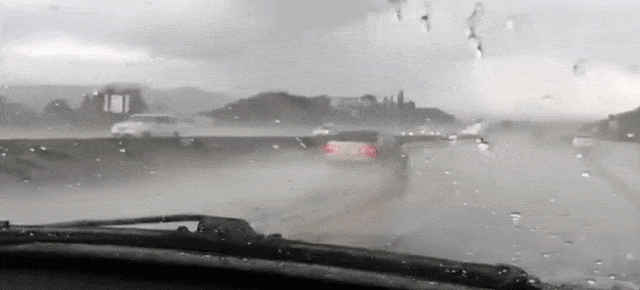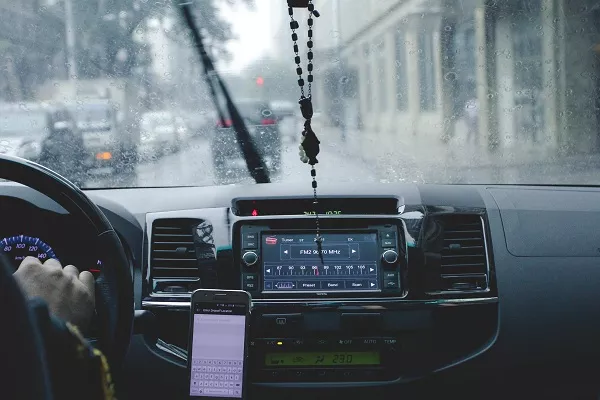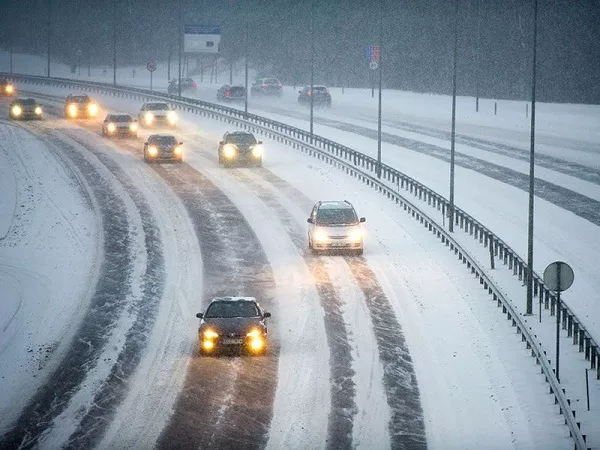We strictly advise against driving when the weather is unhappy. Rainy season can give days that range from light, trickling drizzles to heavy, windy rains. It can also create a lot of problems for the drivers who choose to be on the road.
Slippery roads are one of the dangers that you need to watch out for. But if you really need to go out even in the most unfriendly weather condition, read the article from Philkotse.com for useful tips on how to deal with slippery roads.
1. Keep a slow and steady pace
The rain can cloud up the road and you may not be able to get 100% vision of everything ahead. This is why you should practice driving on a slow and steady pace whenever driving while there is an overwhelming downpour. Road visibility could also get worse once there is a mix of wind and rain.

Road visibility could also get worse once there is a mix of wind and rain
The wind can manipulate the movement of the raindrops and can cause them to fall faster and harder on your windshield. As urgent as it may seem for you to get out of the road immediately, you should still go slow since you are not the only one who is in a hurry to get away from the rainy weather.
There may be other drivers or pedestrians that are trying to make their way under the rain in a hurry. If you drive slowly, you are giving yourself enough time to see other elements that you can end up colliding with. You will also need to spot road bumps and other guide signs on the road if you drive slowly.

Drive slowly give you time to deal with the unexpected situation
>>> You might like to check out: How to drive safely in heavy rain: 5 essential tips
2. Be focused all the time
Asides from keeping a slow pace while driving, you would also need to get both your hands on the wheel at all times (unless you drive a manual). Since it is raining and your vision of the road is limited, you would need to focus your eyes on your path.
Stay away from distractions like texting, phone calls, and eating. Also, limit conversations with your passengers and other distractions until you’ve successfully parked the vehicle. Doing this will actually help you develop a good habit of concentrating on the road over time, even when it’s not slippery and raining.
Your hands and eyes are two, well-coordinated parts and focusing on the road ahead will let you manipulate the wheel quickly in case your vehicle steers away from the right path.

You need to get both your hands on the wheel at all times (unless you drive a manual)
3. Using Your Vehicle Lights only when needed
There are some drivers that tend to utilize their hazard lights for visibility in rainy and harsh weather conditions. We cannot express enough how much of a bad idea this is. The goal of the hazard light is to let other drivers know that there is something wrong with your car and you need to park soon.
Another use of this is by making the vehicle visible once it is on the side of the road if it has broken down. If you are using the hazard light while on the road you will most likely confuse other drivers and cause them to 1) suddenly step on their brakes thinking that there may be something that has gone wrong with your vehicle, or 2) keep driving and become puzzled as to whether you’ll be turning left or right.
Remember that if you want to be seen on the road, do not consider turning your hazard lights unless you really need to. Instead, use the respective lights on your vehicle that were made for that purpose.
Turn on your headlights and rear lights, but keep the headlights lowered so you won’t end up blinding drivers that are coming from the opposite direction.

Use the respective lights on your vehicle only when needed
This is another thing that can also cause an accident. It is also a bad idea to continue driving on bad weather with low visibility if you have incomplete lights. The drivers on the other lane might think that you are driving a slim vehicle like a motorcycle and this could cause a collision if you or an approaching vehicle decides to overtake at the wrong time.
If the weather is really bad and you got broken or dim lights, you should also consider leaving the road and parking on a safe area for a few minutes or just until the road visibility gets better. If you decide to do this, don’t forget to turn on your hazard lights especially if the weather may be clouding your vehicle from other driver’s sight.
4. Make Sure Your Window Wipers Are Working
Your windshield will play a vital role in providing a good vision of the road. That’s why you need to keep them in good shape whatever the weather condition may be. Also, make sure that your windshield wipers are working properly and that it leaves your windshield free from fog and dirt.
If you don’t keep your wipers in good condition it may leave streaks on your windshield or it may not properly whisk away water from the surface. Whichever of the two happens, the result would still be reduced road visibility either way that may lead to unwanted mishaps.

Your windshield will play a vital role in providing a good vision of the road
Another thing you should also keep in check is your windshield wiper fluid. The rain can carry all sorts of elements that can make your windshield foggy and limit your vision of the road. Make sure that your wiper fluid is refilled no matter what the weather condition is.
>>> Read more: Simple Tips to DIY Your Windshield Washer Fluid
5. Check your tires before leaving home
Your most important weapon and armor against slippery roads are making sure that your tires are in good shape. If you notice that the treads are almost worn out, then you may be getting yourself in trouble by driving on a rainy day. The treads will be responsible for keeping your car in good contact with the ground.

Always make sure that your tires are in good shape
Your car tires require maintenance procedures with varying schedules. Tire rotation needs to be done at least every year. While the actual tire replacement would have to be 3 to 4 years depending on the driving conditions that you put your car through.
Recent posts
- Driving on slippery roads without ABS: 5 easy steps to follow Nov 30, 2022
- Prepare your ride for rainy season: 6 common car problems & tips to avoid Aug 16, 2022
- Is your car suspension ready for the rainy season in the Philippines? Sep 05, 2018
- 6 tips to preserve car battery during rainy season in the Philippines Nov 02, 2017
- Tips to protect your car in summer and rainy days May 23, 2017












